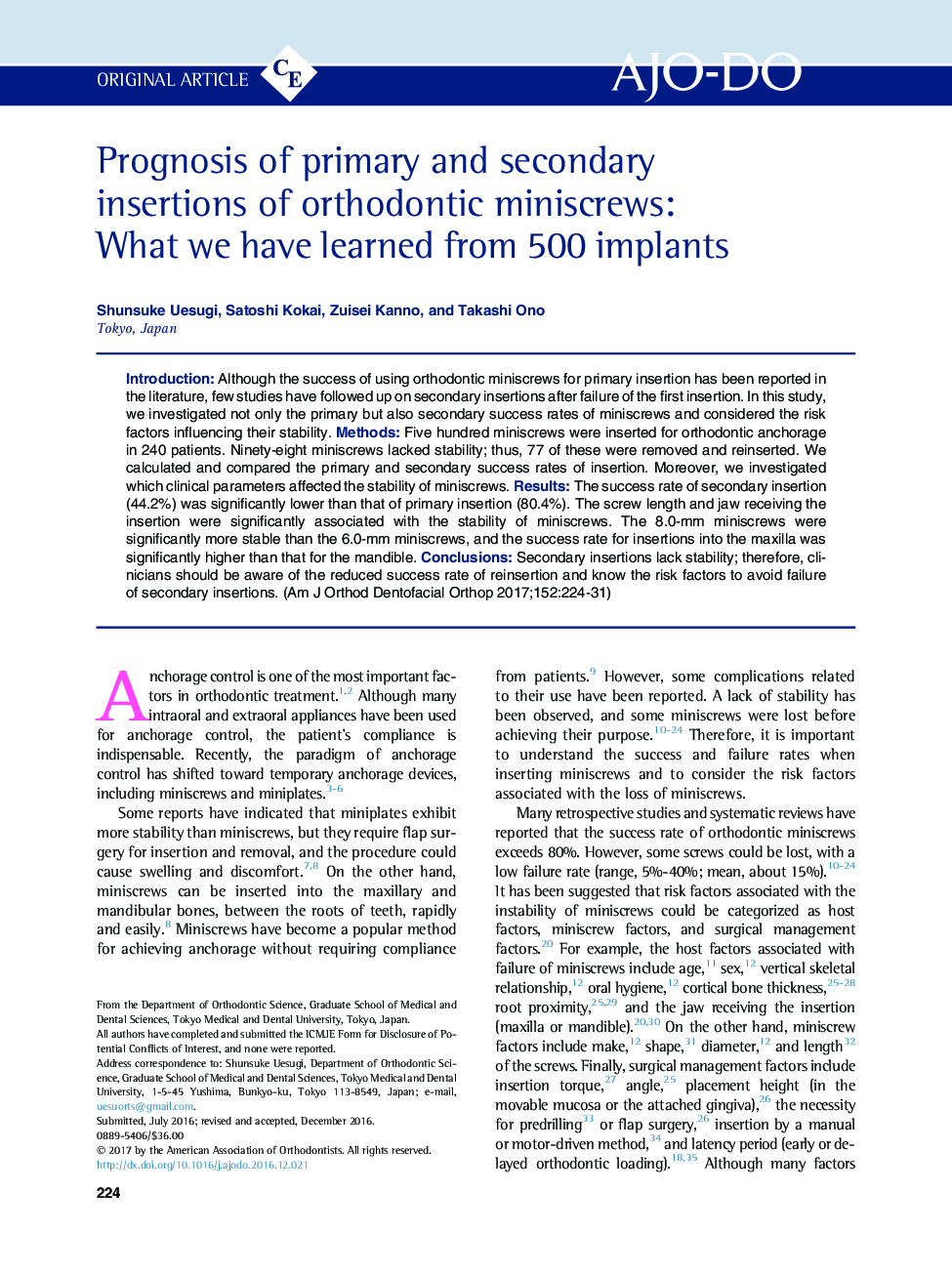| Article ID | Journal | Published Year | Pages | File Type |
|---|---|---|---|---|
| 5637420 | American Journal of Orthodontics and Dentofacial Orthopedics | 2017 | 8 Pages |
â¢Orthodontic miniscrews are effective for primary insertions.â¢Secondary insertions were significantly less successful than primary insertions.â¢Longer (8.0 mm) miniscrews improved stability compared with shorter (6.0 mm) miniscrews.â¢Insertions into the maxilla were significantly more successful than into the mandible.â¢Clinicians should be aware of the reduced success rate of reinsertion.
IntroductionAlthough the success of using orthodontic miniscrews for primary insertion has been reported in the literature, few studies have followed up on secondary insertions after failure of the first insertion. In this study, we investigated not only the primary but also secondary success rates of miniscrews and considered the risk factors influencing their stability.MethodsFive hundred miniscrews were inserted for orthodontic anchorage in 240 patients. Ninety-eight miniscrews lacked stability; thus, 77 of these were removed and reinserted. We calculated and compared the primary and secondary success rates of insertion. Moreover, we investigated which clinical parameters affected the stability of miniscrews.ResultsThe success rate of secondary insertion (44.2%) was significantly lower than that of primary insertion (80.4%). The screw length and jaw receiving the insertion were significantly associated with the stability of miniscrews. The 8.0-mm miniscrews were significantly more stable than the 6.0-mm miniscrews, and the success rate for insertions into the maxilla was significantly higher than that for the mandible.ConclusionsSecondary insertions lack stability; therefore, clinicians should be aware of the reduced success rate of reinsertion and know the risk factors to avoid failure of secondary insertions.
